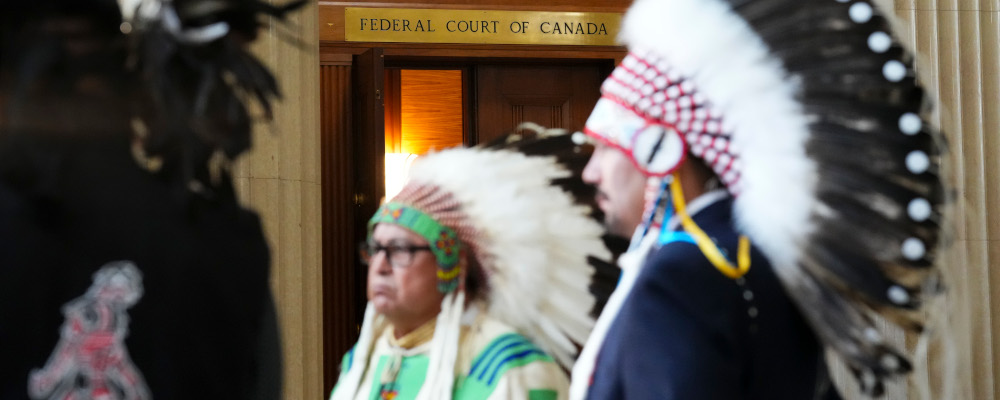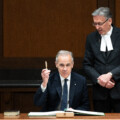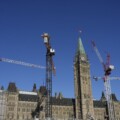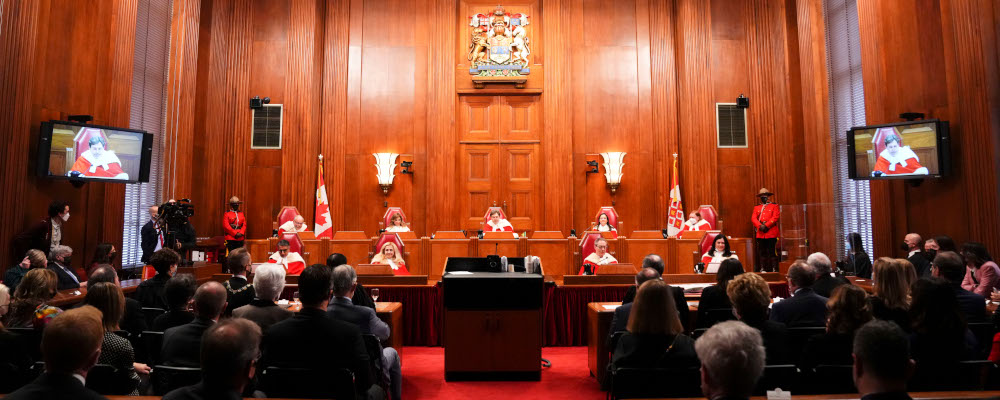Do Charter rights apply when an Indigenous person asserts a violation of their rights by Indigenous governments? Last week in Cindy Dickson v. Vuntut Gwitchin First Nation, the Supreme Court of Canada confirmed that, yes, Indigenous governance bodies are bound by the Charter, and that its fundamental protections remain in place for Indigenous persons to assert against the entities that govern them even when they’re exercising their inherent rights to self-government.
The case settles, at least for now, what section 25 of the Charter means when it says the guarantees “of certain rights and freedoms shall not be construed so as to abrogate or derogate from any aboriginal, treaty or other rights or freedoms that pertain to the aboriginal peoples of Canada.” According to the majority judgement written by Justice Kasirer and Justice Jamal, s. 25 is not a shield self-governing Indigenous groups can assert to discriminate whenever they wish.
But, unfortunately for the applicant, Cindy Dickson, it can sometimes operate like a shield.
Dickson is a member of the Vuntut Gwitchin nation who wished to stand for election as a Vuntut Gwitchin councillor. Because she has a child with a medical condition necessitating access to a hospital, Dickson resides in Whitehorse rather than in Old Crow, Vuntut Gwitchin’s fly-in community on its settlement lands in the northern Yukon Territory. The nation, which concluded a self-government treaty with the Yukon government in 1993 and has its own constitution, has created a rule requiring all council members to reside in Old Crow or relocate there within 14 days of being elected. Dickson asserted that this rule was a violation of her right to equality under section 15(1) of the Charter. The Indigenous government responded that she was prevented from even asserting the Charter against its internal rules.

A majority of the Supreme Court justices upheld residency requirements for council positions because it was “irreconcilable” with the Charter’s equality guarantees, effectively placing that particular distinction as beyond the Charter’s reach. While it’s too early to be sure how this complex decision will play out, it may be bad news for Indigenous women. The dissent—written by two female judges including the Court’s only Indigenous member—would, in my view, have better reconciled the competing collective and individual rights.
This question of how to integrate individual equality with Indigenous self-determination and collective rights is internally contested amongst Indigenous communities. At the SCC hearings, some Indigenous organizations urged the Court to find that the Charter ought to be applied to Indigenous governments generally, pointing to the need to safeguard the rights, in particular, of vulnerable Indigenous individuals such as women or off-reserve Indigenous people. But other Indigenous organizations argued to the contrary that the Charter does not apply to the exercise of Indigenous self-government unless an Indigenous people explicitly consents to this.
A majority of the court—six of the seven members who signed on to judgments—ruled that the Charter applies to self-governing Indigenous communities because such communities operate in a way that makes them “governmental in nature.” Ms. Dickson had shown a prima facie infringement of her right to equality. The case contains an explicit and important acknowledgement that the protections of the Charter extend to Indigenous peoples when their rights are infringed by their own governments as well as non-Indigenous governments.
However, the question of how to balance this infringement with s. 25 of the Charter was subject to sharp disagreement. The Court’s majority found that the purpose of s. 25 is to protect “Indigenous difference,” including cultural difference, prior occupancy, sovereignty, and treaty participation. The majority concludes that where one of these collective rights is in a real and irreconcilable conflict with individual Charter rights, it trumps those rights. Here, the Court found that VGFN’s own rules, contained in its Constitution, governing election to council, which was based on the ancestral principle of connection to the land, was in such an irreconcilable conflict.
The dissent, co-written by the Court’s sole Indigenous member, Justice O’Bonsawin, along with Justice Martin, disagreed. The dissenting judges would have applied s. 25 more narrowly and cited from the intervenor factum of the Canadian Constitution Foundation, which I direct, to emphasize the importance of ensuring that s. 25 cannot “effectively create extensive Charter-free zones in the context of Indigenous self-government, depriving Indigenous peoples of fundamental rights protections and immunizing governments ‘from the rights and freedoms floor established in the Charter.’”

The dissent found that Dickson’s right to equality was unjustifiably violated, as a member of Vuntut Gwitchin who retained her cultural identity as a member of the nation despite being unable to maintain residence on Old Crow. Section 25, in their reading, should not act as a shield to prevent Indigenous peoples from asserting their Charter rights, including against their own governments.
The dissent explains that collective and individual rights are neither mutually exclusive nor binary. The dissent’s vision of Indigenous collective rights that can evolve and respond to the rights assertions of their own members reflects a paradigm of Indigenous self-governance that is dynamic and recognizes the diversity of needs, exigencies, and preferences amongst Indigenous people in modern Canada. In particular, requirements for political participation in Indigenous governing bodies may have a disproportionate effect on women, like Cindy Dickson, who have caretaking or familial obligations that require them to live away from settlement lands.
It is perhaps not a coincidence that the dissent, which is co-authored by the Court’s only Indigenous member, candidly acknowledges the elephant in the room: the “discriminatory nature of some Indigenous governance structures” and the need for Indigenous persons to have robust recourse to individual rights claims.
Litigation brought by Indigenous plaintiffs, for example, has successfully challenged membership rules excluding some women and their children and the exclusion of women from debating constitutional reforms. Indigenous governance structures are no more or less prone to discriminatory policies and abuses of power than any other governance structure, and the notion that they should have special insulation from those whom they govern is morally repugnant. The dissent soberly advises against applying “Indigenous difference” so widely that discriminatory practices are treated as being sacrosanct.
Although the dissent’s view didn’t prevail, a robust majority of six judges found that the Vuntut Gwitchin First Nation, exercising powers delegated by federal Parliament, was bound by the Charter. Were the Court to find that the right to self-governance excluded even the prima facie assertion of Charter rights, the implications would be dire as more and more First Nations groups take up self-government. It would be hubristic to assume that Indigenous governments, unlike all other forms of government, are somehow immune from infringing against their citizens’ rights, and it would be unfair to deprive Indigenous Peoples of the same baseline protections as every other resident of Canada.
Recommended for You

The Notebook by Theo Argitis: Carney’s One Big Beautiful Tax Cut, and fresh budget lessons from the U.K.

Christopher Snook: Is Canada sleepwalking into dystopia?

Rudyard Griffiths and Sean Speer: The fiscal hangover from the One Big Beautiful Bill hits Canada

‘A fiscal headache for Mark Carney’: The Roundtable on how Trump’s One Big Beautiful Bill could affect Canada




